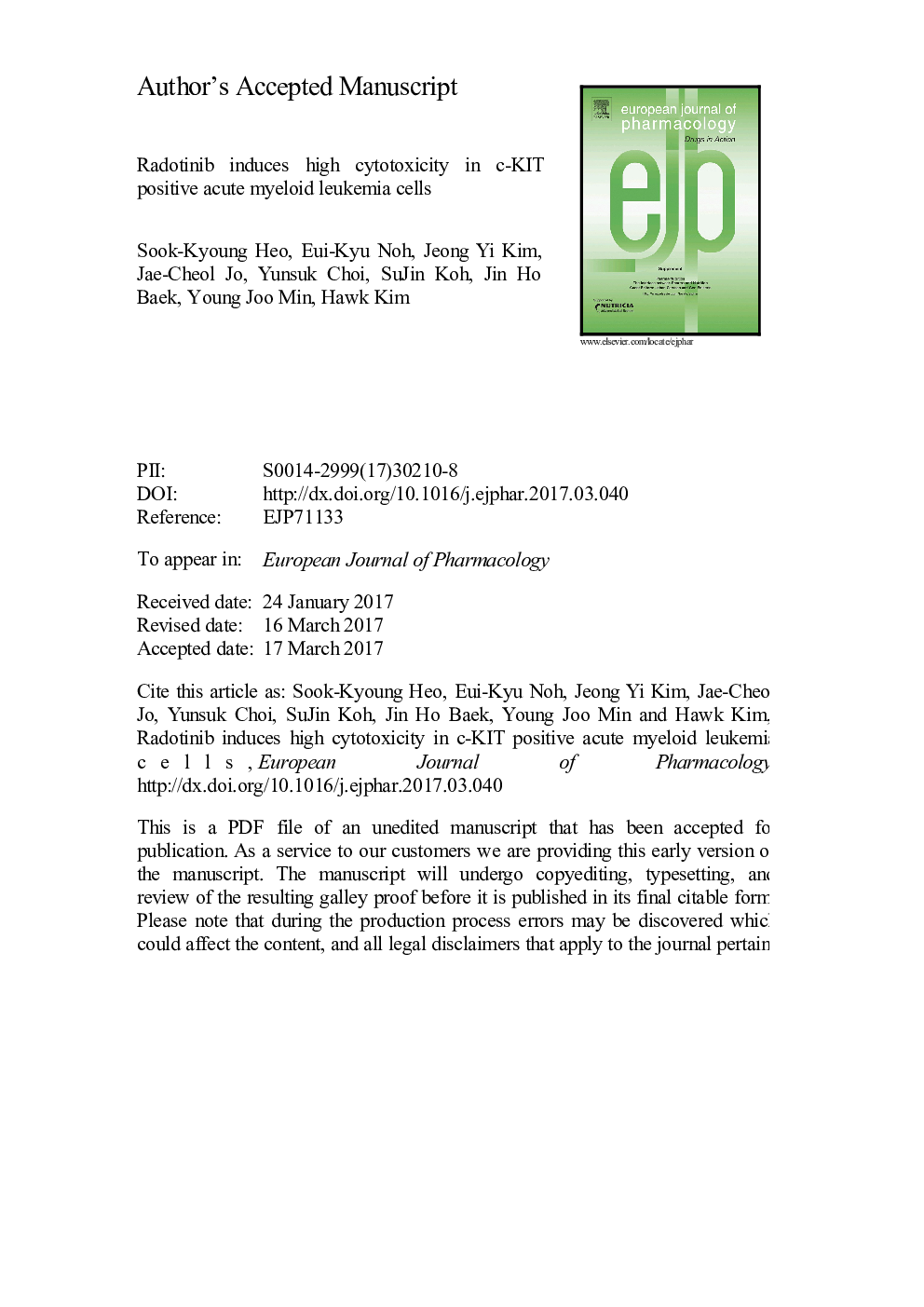| Article ID | Journal | Published Year | Pages | File Type |
|---|---|---|---|---|
| 5554620 | European Journal of Pharmacology | 2017 | 24 Pages |
Abstract
Previously, we reported that radotinib, a BCR-ABL1 tyrosine kinase inhibitor, induced cytotoxicity in acute myeloid leukemia (AML) cells. However, the effects of radotinib in the subpopulation of c-KIT-positive AML cells were unclear. We observed that low-concentration radotinib had more potent cytotoxicity in c-KIT-positive cells than c-KIT-negative cells from AML patients. To address this issue, cell lines with high c-KIT expression, HEL92.1.7, and moderate c-KIT expression, H209, were selected. HEL92.1.7 cells were grouped into intermediate and high c-KIT expression populations. The cytotoxicity of radotinib against the HEL92.1.7 cell population with intermediate c-KIT expression was not different from that of the population with high c-KIT expression. When H209 cells were grouped into c-KIT expression-negative and c-KIT expression-positive populations, radotinib induced cytotoxicity in the c-KIT-positive population, but not the c-KIT-negative population. Thus, radotinib induces cytotoxicity in c-KIT-positive cells, regardless of the c-KIT expression intensity. Therefore, radotinib induces significant cytotoxicity in c-KIT-positive AML cells, suggesting that radotinib is a potential target agent for the treatment of c-KIT-positive malignancies including AML.
Keywords
Related Topics
Life Sciences
Neuroscience
Cellular and Molecular Neuroscience
Authors
Sook-Kyoung Heo, Eui-Kyu Noh, Jeong Yi Kim, Jae-Cheol Jo, Yunsuk Choi, SuJin Koh, Jin Ho Baek, Young Joo Min, Hawk Kim,
